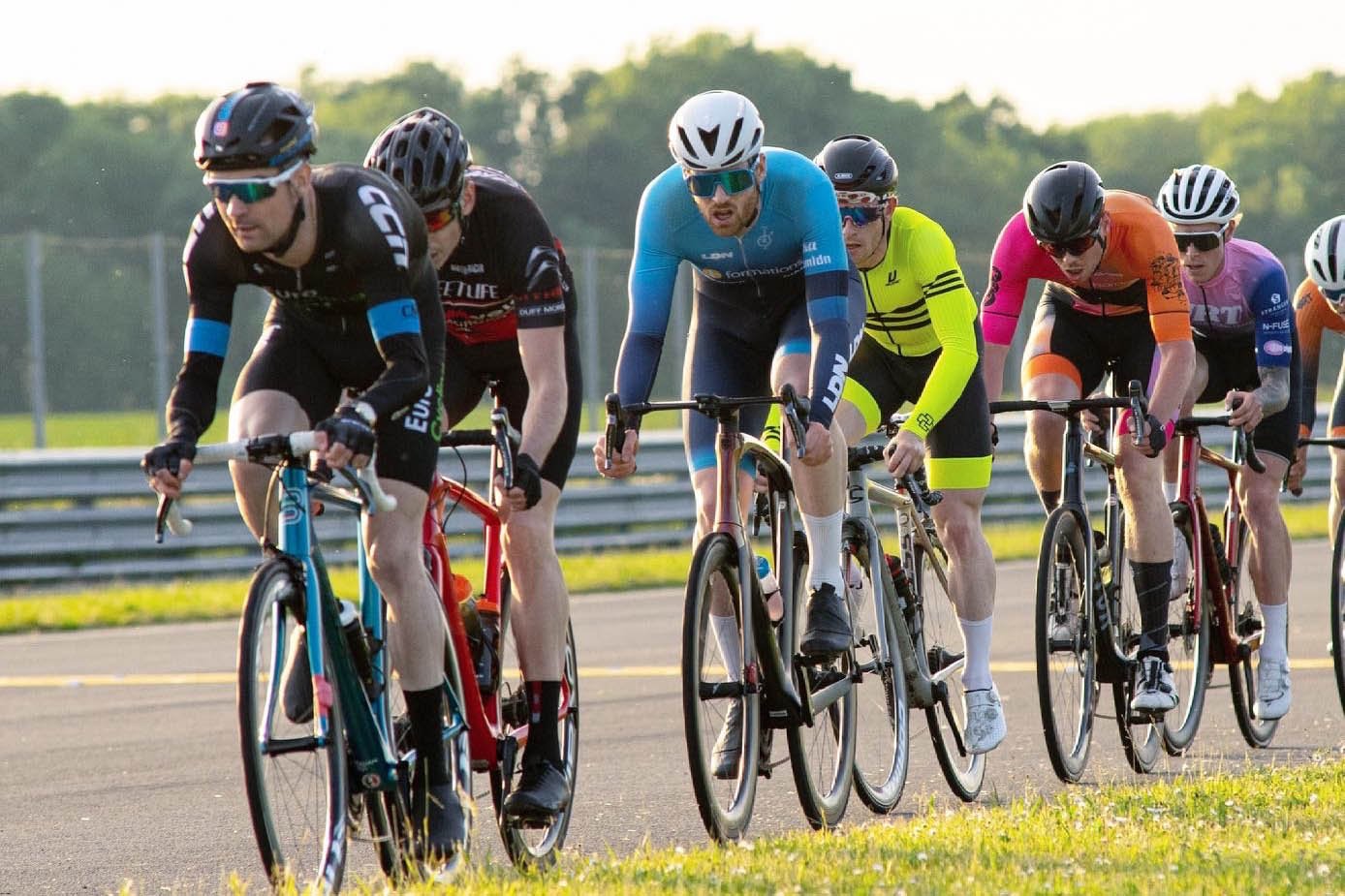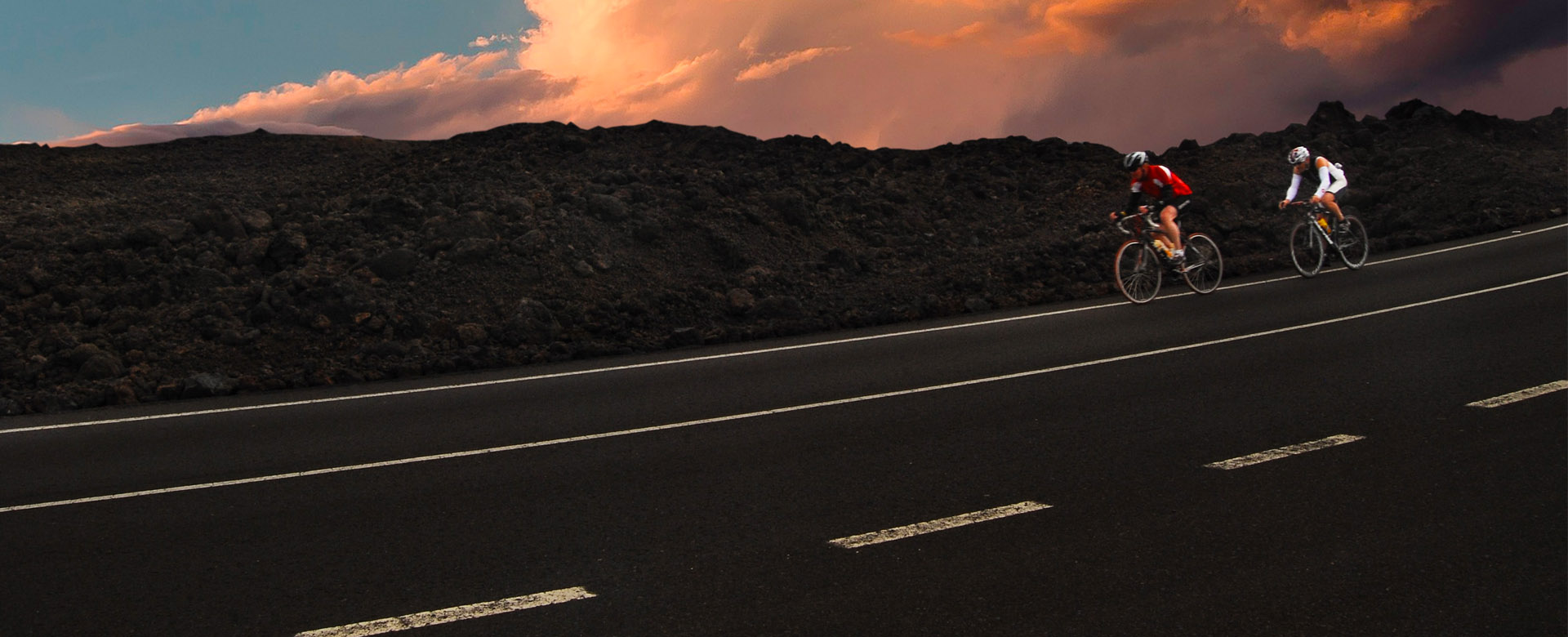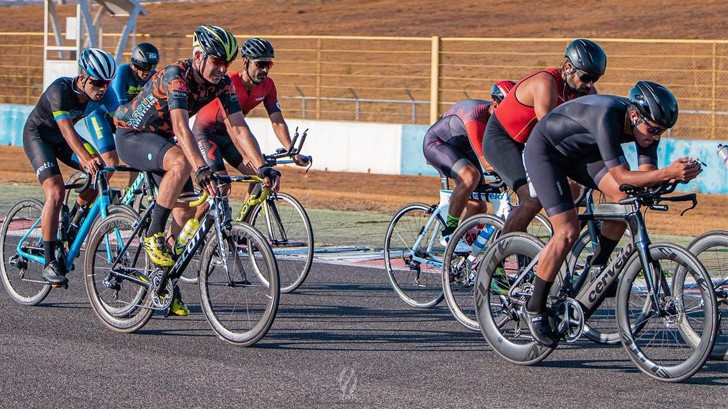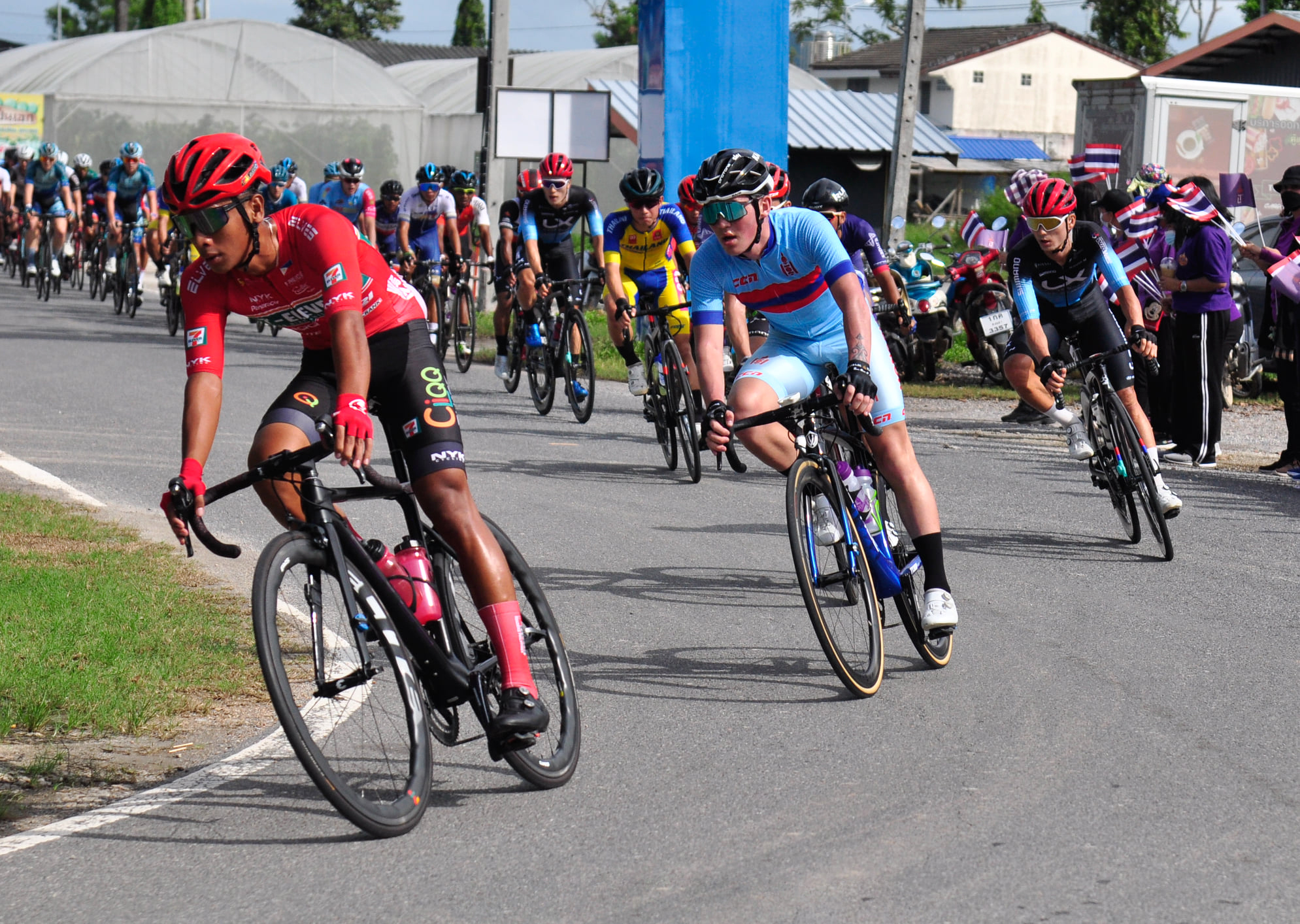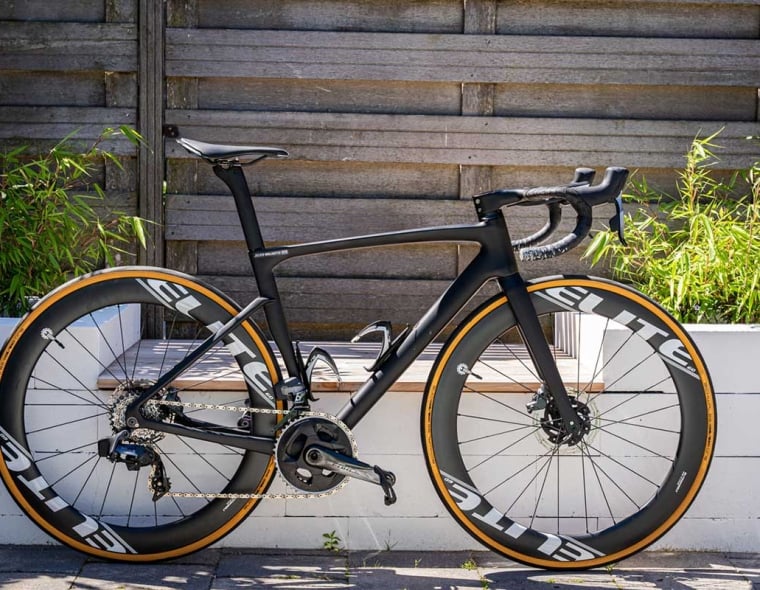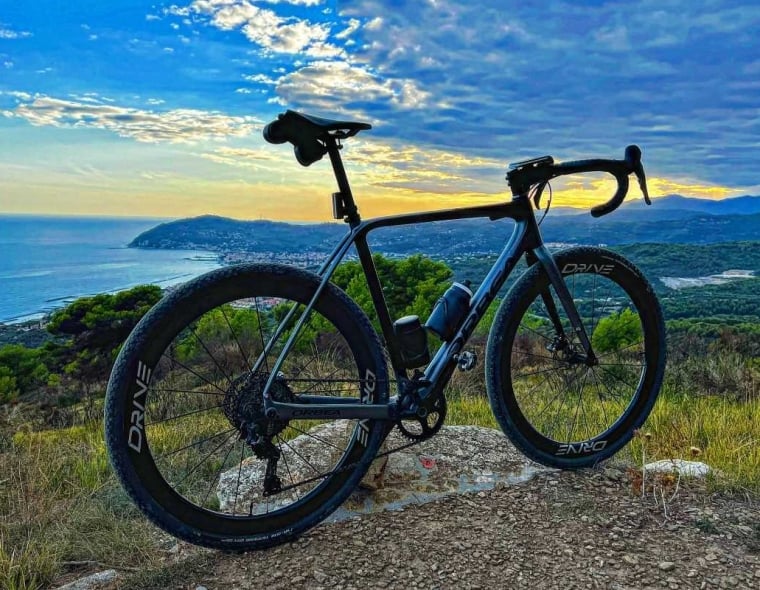In the cycling career, what most people have heard is the pursuit of speed and the pursuit of higher speed, such as accelerating and faster. Many people often neglect to slow down. From time to time, We also see that in bicycle races, the speed is too fast to pass the sharp curve, resulting in the overturn of the bike and so on.
When cruising at high speed, it is very easy to have an accident if not proficient in operating the brake system when people or things suddenly rush out, going down a steep slope or making a sharp turn. After all, the bicycle is not like a car, and it only has a few hundredths of a second to react whether to pinch the left or right hand brake. Let’s study the braking knowledge for riding bikes,you can only speed up better after you learn how to brake and slow down.
There are three things you have to know about brakes: first, brakes are about speed control, not just stopping the bike; Second, the front wheel brake has better braking effects, the response is fast and also also easier to lock; Brake lock will play its maximum function, but easy to flip the bike forward, and when the braking process stops, its braking capacity will be greatly reduced.
What’s The Safest Way To Brake?
For the disc brake and V brake commonly used on mountain bikes, the braking force is designed to be greater than the friction between the tire and the ground, which means that braking with full force will cause the tire to lock. Therefore, for mountain bike we should use both front brake and rear brake in the emergency brake, the force of the front brake accounted for 60%-70%, the force of the rear brake accounted for 30%-40%. At the same time we need to push forward the handle bar as far as possible to keep our weight on the rear wheel, so as to obtain the maximum braking effect and avoid the sideslip caused by tire lock.
We need to use the brakes in accordance with the ratio of front brake 70% and rear brake 30% when riding road bikes,Because the center of gravity is more forward on a road bike, When braking inertia causes the front wheels to have much more friction with the ground than the rear wheels. Due to the use of a shorter brake block on the road bike brake clamp, the friction between brake block and wheel ring is slightly less than the friction between the tire and the ground, so the road bike is not easy to cause tire lock, high speed brake safety is higher than V brake and disc brake, however, the effect of sudden braking at low speed is slightly worse.
It is very dangerous to brake in corners when cycling. The front wheel grip conditions become very complicated in the corners, an accidental front or rear wheel lock will result in an immediate fall. Therefore, the use of brakes in the bend should be very careful, the strength should be average for front and rear brake, and avoid hard braking in the bend, it’s better to completely slow down before entering the bend.
Maximum Deceleration – Emergency Brake
It is generally believed that the front and rear brakes should be brake at the same time. This is suitable for beginners who have not mastered braking skills. But if you stop at this stage, you will never be able to stop your bike in the shortest distance and in the safest way as those who have learned to use only the front brake.
The quickest way to stop any normal front-rear span bicycle is to apply so much force to the front brake that the rear wheel is just about to lift off the ground, where it has no friction and provides no braking force.Will there be a front flip? If the ground is slippery or the front tire has blown out, use the rear tire only. But on dry asphalt and cement, using only the front brake will provide maximum braking force.
Many people are afraid to use the front brake, fearing rolling over the handlebars, but mostly it happens to people who haven’t learned how to use the front brake. A cyclist who only uses the rear brake will not have a problem under normal circumstances but in an emergency, in a panic, in order to stop quickly, the cyclist will apply both the rear brake and the unfamiliar front brake, causing the classic front flip.
If you just use the rear brake, this doesn’t happen because as soon as the rear wheels start to tilt up, the braking force is reduced accordingly and the problem is that it takes twice as long distance to stop using the rear brake as it does using the front brake. So it’s not safe for a fast cyclist to just use the rear brake and in order to avoid front flip, it’s very important to use both arms against the body. Good braking skills require moving your body as far back as possible, moving your center of gravity as far back as possible no matter you only use the front brake or use both front brake and rear brake. Using the front and rear brakes at the same time may cause tail wagging. When the rear wheels start to slide and the front wheels still have braking force, the rear of the bicycle will swing forward because the front wheels have more braking force than the rear wheels. Once the rear wheel starts to slide, it may swing forward or sideways. Rear wheel sliding (drift) wears the rear tire very fast. If you stop a bicycle at 50km/h by holding the rear wheel to a standstill, you can grind the tire to the braided layer in one go.
Learn To Use Front Brake
Front braking produces better braking capacity. Because of inertia, friction between the road and the front wheels increases when the front brake is in operation, making braking effects better. This is especially significant in the downhill, because the weight of the human body is in the front end, the friction between the wheels and the ground is unusually small, and a little braking force can make the rear wheel hold dead skid. Maximum braking force is when so much force is applied to the front brake that the rear wheel of the bicycle is just about to lift off the ground,the slightest touch of the rear brake will cause the rear wheels to drift.
If you use a regular bike, the best way to learn to use the front brake is to find a safe place and use both front and rear brakes, but mainly use the front brake. Keep pedaling so that you can feel the back wheels start to drift from your legs. Pinch, not grip, the brake handle so that you can feel the force being applied. Practice braking harder and harder, and feel the sensation of the rear wheel going up when braking hard. Every time you ride an unfamiliar bike, you should test the braking sensitivity of different bikes. You should understand the braking sense of the bike. Once you’re comfortable with the front brake, practice releasing the brake so that you regain control of the bike, until it becomes an automatic reflex to slow down, apply the brake hard, until the rear wheels are about to pop up, release the brake. Remember to wear the basic helmet and gloves, even while you’re practicing.
Expert cyclists use only the front brake 95% of the time, but it’s better to use the back brake in some situations. Like a slippery road. In dry asphalt, cement road surface, unless turning, it is almost impossible to use the brake to make the front wheel skid. But on slippery roads, it is possible. Once the front wheel slips, it is inevitable to fall so if the ground is slippery, it is best to use the rear brake. Do not use the front brake on a bumpy road, where the wheels will be lifted off the ground in an instant. Using the front brake will make it difficult for the bike to clear the obstruction if it happens to be obstructed. When the front wheel is off the ground, if the front brake is used, the wheel will stop in the air, and the consequences of landing with a stopped wheel will be very serious. When there is no air in the front tire, if the front tire burst, or suddenly no air, be sure to use the rear brake to stop the bike. Using front brakes with flat tires can cause tires to fall off, fall, damage to brake lines, or other front brake failures.
When To Use The Front And Rear Brake At The Same Time
In general, it is not recommended to use both front and rear brakes, but there are always exceptions:
If the front brake doesn’t have enough power to lift the rear wheels, then the rear wheels can also provide braking. But it’s best to fix the front brake. The general rim brake will lose a lot of braking force when the rim is wet, so using the front and rear brake at the same time can reduce braking distance.
The brake surface of Elitewheels SLT uses a mixture of 270 degrees Celsius high temperature resin and T800 material, and also adds a drain groove, regardless of dry weather or wet weather, the performance of the brake side has a good performance guaranteed braking distance on slippery roads.
 If the front brake is unsmooth or has abnormal sound, can not control smoothly, you should use front brake less, it is best to repair the front brake as soon as possible. On straight and long downhill, the hand of will be very tired to keep pressing the front brake, and it is possible to make the front wheel overheated and tire burst. At this time it is best to take turns to use the front brake and rear brake, with the way of cadence braking, so that the heat generated by the brake is divided into two rims and dissipated, so as not to accumulate heat and damage the tire. When rapid deceleration is in need, use the front brake cornering, grip both braking and cornering, using the front and rear brake at the same time can reduce the possibility of wheel slipping. The more urgent the cornering, the lighter the brake, so before entering the corner to control the speed, brake in advance when cornering urgently, with the center of gravity into the corner. We often hear some cycling friends say that it is better to brake rear wheel, brake front wheel is dangerous, because if you lock the front wheel you will slip or fall. In fact, the idea that the main brake is the rear brake is wrong. The purpose of braking is to use the friction between the wheels and the ground to slow down or even stop the bike. In fact, the rear brake is for slowing down, the front brake is for braking. In fact, the idea that the main brake is the rear wheels is wrong. The purpose of braking is to use the friction between the wheels and the ground to slow down or even stop the car. In fact, the rear brake is for slowing down, the front brake is for braking. The front brake plays a bigger role than the rear brake, which mainly controls the speed of travel. In principle, with the ground friction wheel assume the main braking task, when braking, due to inertia, the center of gravity of the vehicle will move forward to front wheel, the more urgent you brake, the center of gravity is more inclined to the front wheel, the weight distribution on the rear wheel is reduced, the friction of the ground will also be reduced, the braking effect will become worse. If you only brake the rear wheel, the bike can not stop, you can only continue to apply the brake, and then the rear wheel locks, causing sideslide and dangers.
If the front brake is unsmooth or has abnormal sound, can not control smoothly, you should use front brake less, it is best to repair the front brake as soon as possible. On straight and long downhill, the hand of will be very tired to keep pressing the front brake, and it is possible to make the front wheel overheated and tire burst. At this time it is best to take turns to use the front brake and rear brake, with the way of cadence braking, so that the heat generated by the brake is divided into two rims and dissipated, so as not to accumulate heat and damage the tire. When rapid deceleration is in need, use the front brake cornering, grip both braking and cornering, using the front and rear brake at the same time can reduce the possibility of wheel slipping. The more urgent the cornering, the lighter the brake, so before entering the corner to control the speed, brake in advance when cornering urgently, with the center of gravity into the corner. We often hear some cycling friends say that it is better to brake rear wheel, brake front wheel is dangerous, because if you lock the front wheel you will slip or fall. In fact, the idea that the main brake is the rear brake is wrong. The purpose of braking is to use the friction between the wheels and the ground to slow down or even stop the bike. In fact, the rear brake is for slowing down, the front brake is for braking. In fact, the idea that the main brake is the rear wheels is wrong. The purpose of braking is to use the friction between the wheels and the ground to slow down or even stop the car. In fact, the rear brake is for slowing down, the front brake is for braking. The front brake plays a bigger role than the rear brake, which mainly controls the speed of travel. In principle, with the ground friction wheel assume the main braking task, when braking, due to inertia, the center of gravity of the vehicle will move forward to front wheel, the more urgent you brake, the center of gravity is more inclined to the front wheel, the weight distribution on the rear wheel is reduced, the friction of the ground will also be reduced, the braking effect will become worse. If you only brake the rear wheel, the bike can not stop, you can only continue to apply the brake, and then the rear wheel locks, causing sideslide and dangers.
We need to use front and rear brake flexibly when braking, on the same ordinary road, there is no front wheel sideslip, the front brake is the main, the rear brake is auxiliary; And in the road conditions that can cause the front wheel to slide, the rear brake is the main, the front brake is the auxiliary. If you feel that you can not tell the front brake from the rear brake in a sudden, a word to sum up: A road bike rider or rider who usually rides only on blacktop, use the front brake as predominating and the rear brake as assisting. Learning to use the distribution of brake correctly will greatly improve riding safety, so that you can actually ride faster.



